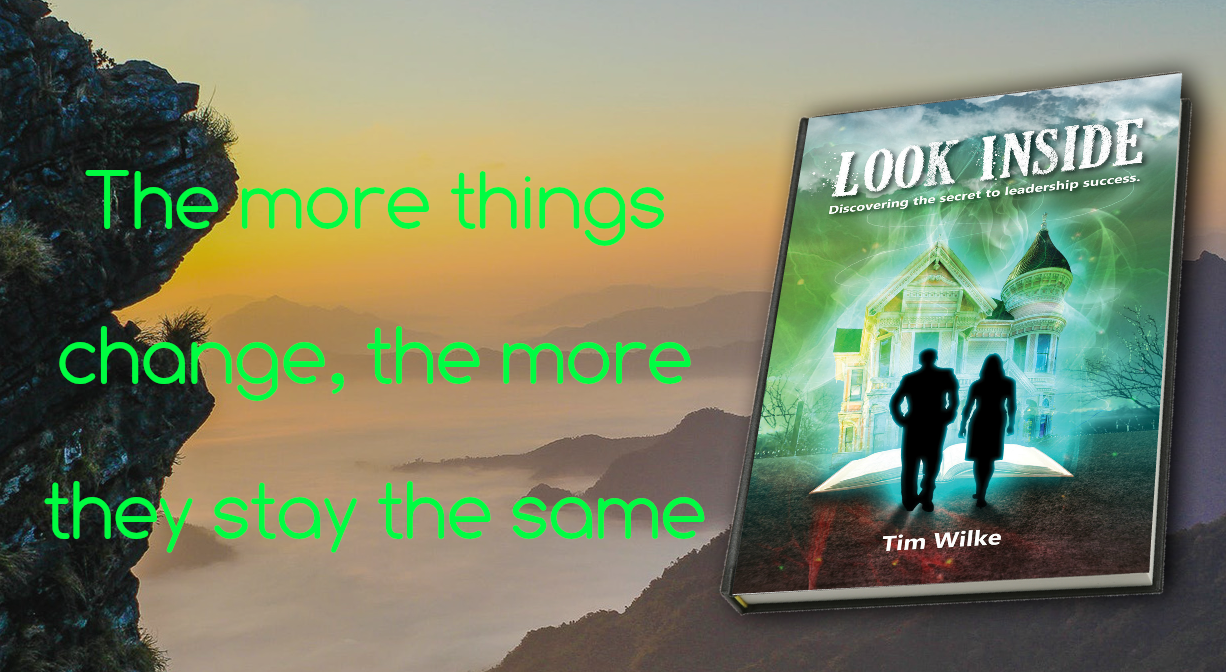The more things change
It may be 4 years since my book ‘Look Inside: Discovering the secret to leadership‘ was first released, but the message it contained is just as relevant today as it ever was. But just don’t take my word for it. Read what Jamie BJ had to say about it in her April 2019 review of the book.
This is an allegorical book that means to teach about leadership success through story. Ruby and Byron are two managers who have different concepts of what leadership success looks like. At a fair, they visit a magical manor where they are each given a different box of leadership tools. They are told that a mentor will follow up with them to help them better use their tools.
Byron is the type of boss who thinks he should decree everything his employees do while Ruby is a leader who prefers to empower the people she works with. The tools in each of their boxes correlate with their respective managerial styles.
The principles of success in leadership that this book espouses ring true. A boss is not necessarily a leader. But unfortunately, not all bosses understand that. It takes a certain level of trust to truly lead, which is something that many would-be leaders have a hard time both engendering and allowing.
The message is clear
To me this is a perfect example of the old adage, the more things change, the more they stay the same.
Let me explain what I mean by this.
One of the things that has changed of late is the repeated calls to managers to place a greater emphasis on raising the percentage of engaged employees to levels of at least 70 percent. My book ‘Look Inside: Discovering the secret to leadership success‘ being just one of those voices.
However, regardless of whether managers heeded these calls for action or not, it was all in vain. I say this because one of the things that has remained the same is that employee engagement levels are, and have been for close on 20 years, at an unacceptably low figure of around the 30 percent mark.
This is certainly worrying. Which begs the question of what’s really going on here? Well, the answer is simple. It’s largely the result of a management style, called ‘Ruling by Fear‘, which began in earnest during the Industrial Revolution era of the 1880s as the way to manage people and has continued unabated even to this very day. But what’s truly worrying is that managers who engage in this style of management do it, in spite of the overwhelming evidence of it being a practice that causes mass employee disengagement in everywhere it’s used.
Or to put it in ‘Look Inside‘ speak, there are nearly as many Byron type managers who ‘Rule by Fear‘ in businesses today as there were back in the days when it first took hold. So the message is clearly not getting through to these Byron types that they need to be more like Ruby, who is queen of the ‘Leading by Influence‘ style of management, if they are successfully engage with their employees.
The consequences
But until this happens, employee engagement will remain at an abysmally low levels. And unfortunately both business and employees will continue to perform poorly because of it.
However, I’m ever the optimist and therefore hopeful that this situation will turn around soon. Although based on current indications, that’s unlikely to be the case.
Want to know more about this?
If you want to know more about how best to engage with your employees, you can do no better than to read my latest book, ‘Jane Hates Her Job; 24 sure-fire ways to motivate employees to do great work’.
It can be purchased on Amazon by clicking here.
If you think it is great, and I’m sure you will, please leave a review.
Because the more managers who read this book and apply the strategies described within it, the greater likelihood that employee engagement levels will go on the climb. I would think that every manager would want that, don’t you?



